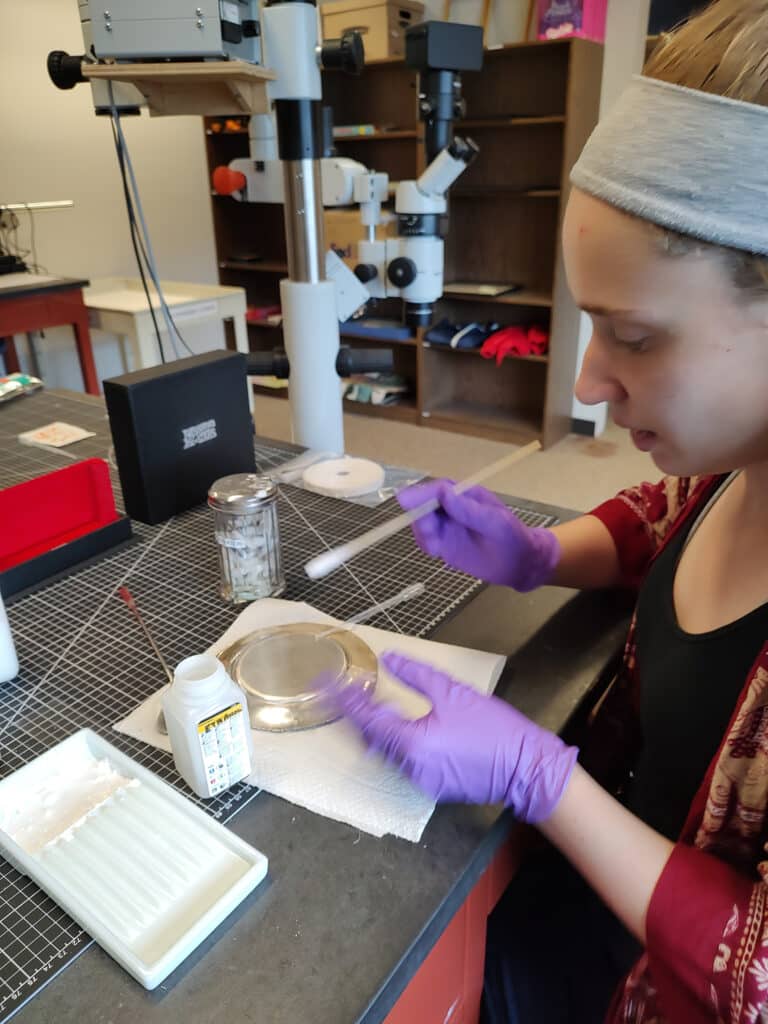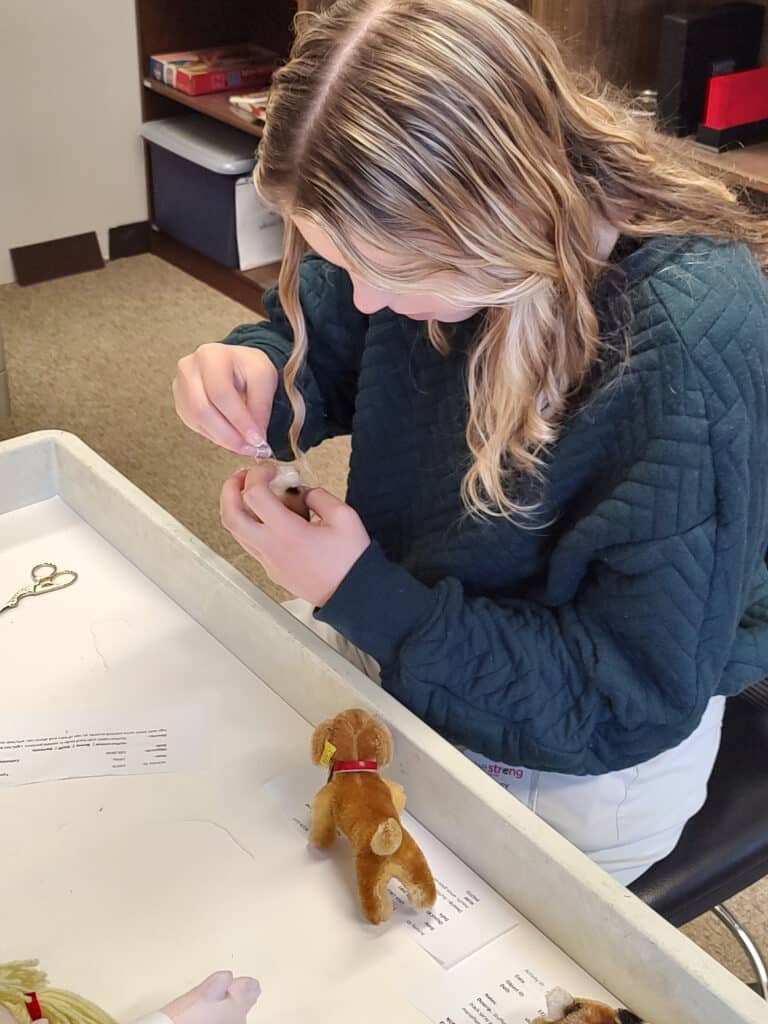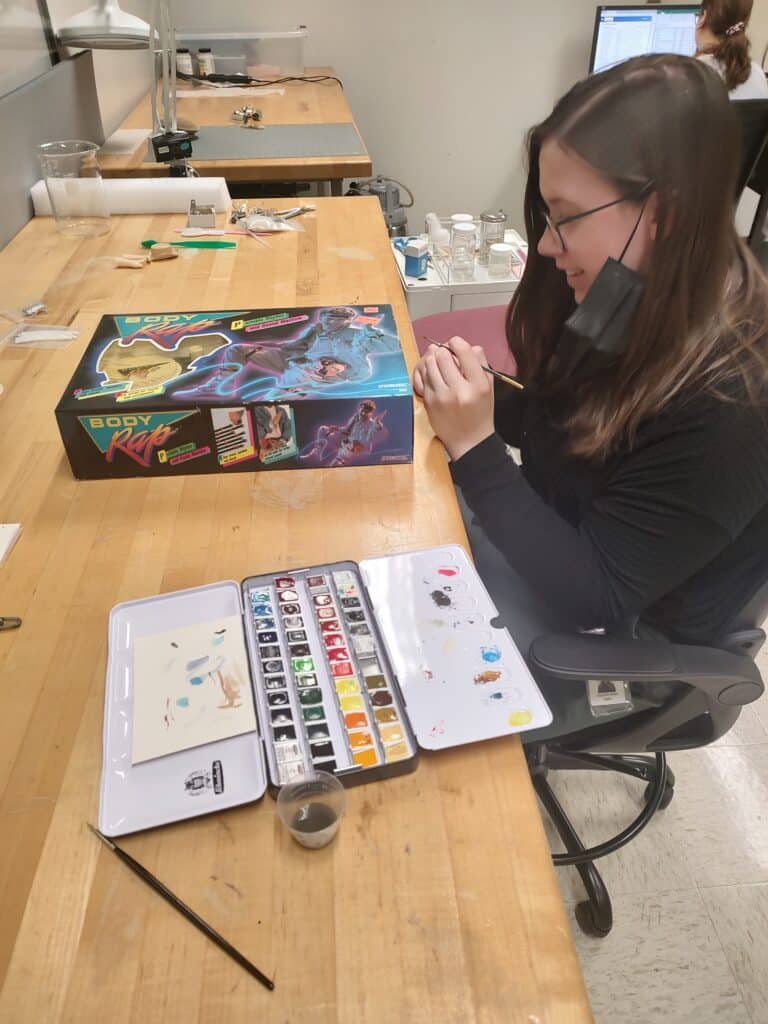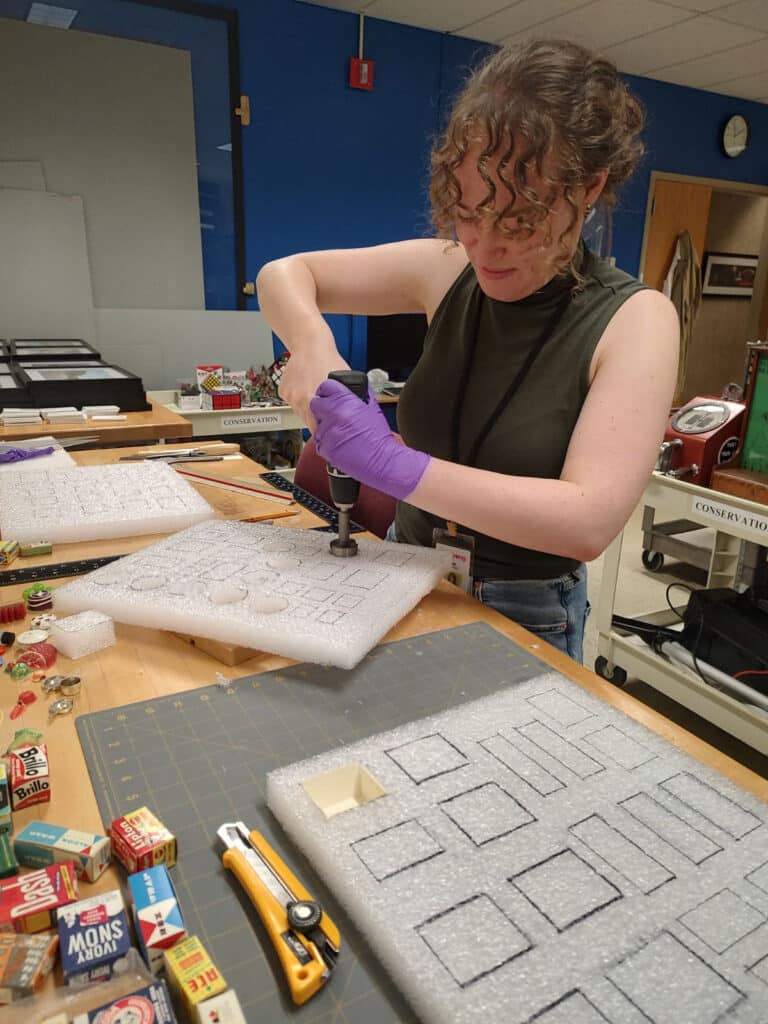Internships are typically a rite of passage for most students in undergraduate and graduate programs with goals of ultimately working in a museum. Internships provide a unique opportunity for students to test the waters and explore various career paths, while learning what working in a certain position or institution may really be like. Internships are greatly beneficial because they provide the ever so important hands-on experience for a student, allowing a practical application of the theories, practices, and ethics that may be discussed in their curriculum. Previously, internships may have historically benefited institutions more, but I personally have always found the current mentee and mentor relationship to be mutually positive and symbiotic.

I have been supervising and training interns for more than 20 years and all of them have been equally important and special to me. There is nothing that beats the bright-eyed excitement that comes over a student’s face on their first few days at their internship. Everything is so fresh, new, and exciting to them. That fresh viewpoint also always rejuvenates my perspective on my job and career thus far. It also reminds me of how challenging it was to be a student. While juggling a full course load each semester, I also worked full time and completed various internships. Back then, most of my internships were not beneficial to me. I was often doing very mundane ‘“grunt” work that my supervisor clearly had no interest in doing themselves. Some supervisors often didn’t discuss tough topics with me like the reality of the challenge of finding a job or the historically low pay museum employees typically receive. We also never covered important topics like museum ethics or disaster preparedness planning. All of my undergraduate internships were also unpaid (I completed six in total). Thankfully, a lot of this has changed for internships in the museum field and are no longer considered free labor that is beneficial only to the institution.

As an internship supervisor now at The Strong Museum, I do my utmost to make sure every internship is customized to the student, so they receive the best experience possible while at the museum. Some students come to us with tons of experience working in museums and others have none. Some are graduate students and others are undergraduates in their first few semesters. These examples already prove that not every internship should be administered in the same way—one size does not fit all because a student’s needs and interests will vary. One of the perks of my current job as a conservator being so closely intertwined with our Collections Team is that it allows the flexibility of creating a multidisciplinary internship. Typically, interns working with Collections and Conservation at The Strong get to participate in a variety of projects based on their interests, career goals, and previous experience. While there are some very foundational projects every intern gets to participate in (cataloguing, building custom housing, performing a treatment on a collections item, etc.), there is also the opportunity to work on longer range projects (planning for new collections storage spaces, exhibition development, etc.). In either scenario, interns always get to work collaboratively with a variety of teams at the museum. In addition to the hands-on experience, I also choose supplemental discussion topics for each week for the duration of the internship, to cover items we might not get the opportunity to experience directly in our projects. Some topics we discuss include learning about the American Alliance of Museums and the accreditation process, the Code of Ethics and Guidelines for Conservators from the American Institute for Conservation, learning how to negotiate and research salary data, and professional development where writing cover letters and curriculum vitae/resumes are reviewed. Interns also get the opportunity to have meet and greets with other colleagues at the museum to ask questions about their backgrounds, current job responsibilities, and their story of how they ended up at The Strong. Again, there is no one path for working in a museum, so the wider net of options that can be cast for an intern, the more positive reinforcement and encouragement they have for proceeding with their career path.

One of the most rewarding aspects of my life has always been working with interns. Education and training have been a cornerstone of my own career, and I’m always happy to help any student any way I possibly can. I try my best to ensure that younger generations are better equipped with foundational knowledge and have a well-rounded internship experience, while learning and gaining practical training. Nothing makes me prouder then when interns stay in touch after their internships are over and continue to share their positive news about getting into their PhD program of choice or landing their first job!

So if you or anyone you know is currently an undergraduate or graduate student looking for an internship to gain experience working in a museum, I highly recommend applying to The Strong’s Internship program. Applicants are typically placed based on the academic year (spring, fall, and summer semesters), so we are always accepting applications. For more information or to discuss a possible internship with Conservation or Collections, please feel free to contact me directly – gdunn@museumofplay.org.


